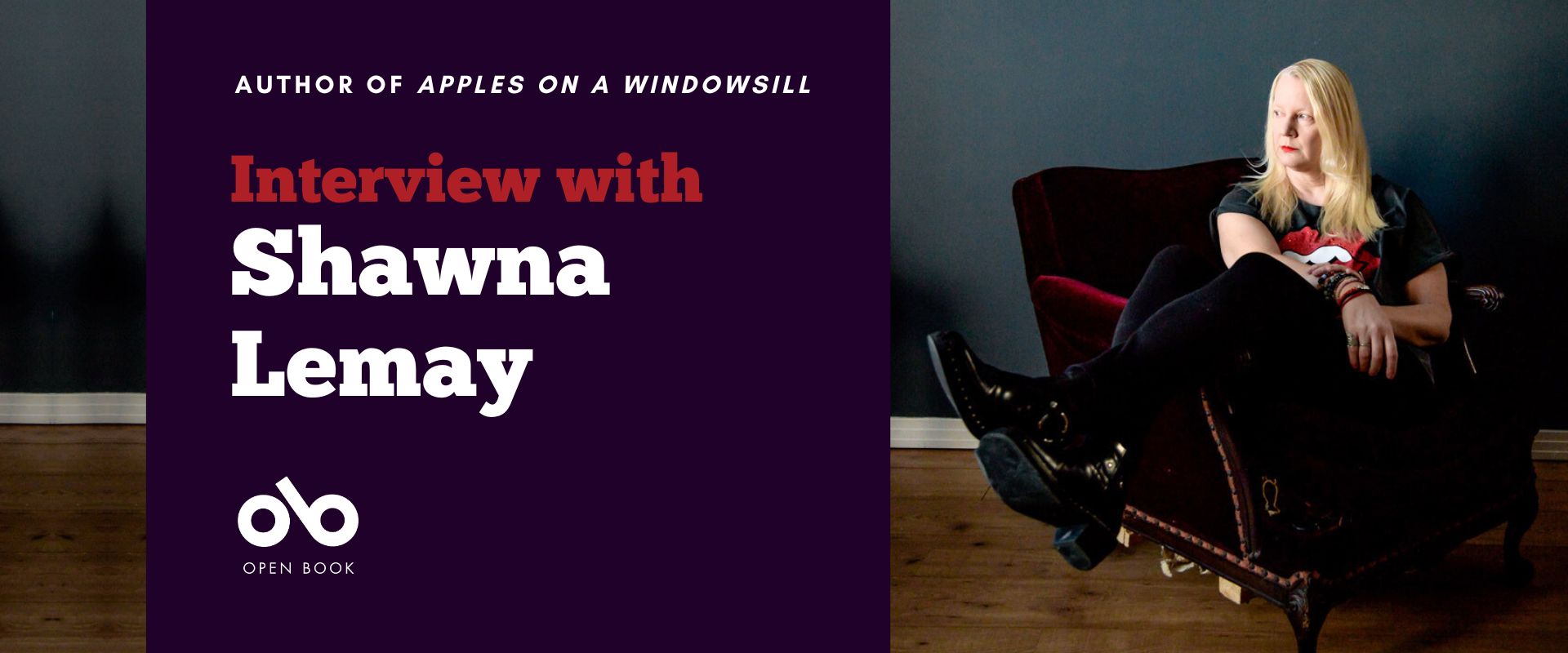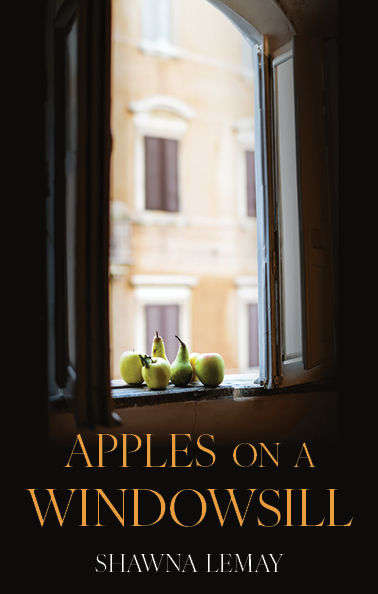Shawna Lemay Uses the Still Life Form to Explore Marriage, Beauty, and Time in Her New Essays
The still life is one of visual art's most enduring forms. From Picasso's revolutionary relief constructions to Van Gogh's iconic sunflowers, it is an artistic experiment that has been embraced, reimagined, perfected, and obsessed over by history's greatest.
In Shawna Lemay's aptly titled Apples on a Windowsill (Palimpsest Press), Lemay looks into still life as a way to explore art, beauty, and marriage. A writer married to a painter, Lemay takes readers from Alberta to Italy and beyond as she ruminates on the history of the still life, weaving in personal anecdotes that are by turns moving and charming.
Honest about both the joys and challenges of a marriage between two artistic people, Apples on a Windowsill is a clear-eyed and absorbing journey both artistic and personal, and we're excited to speak with Shawna, who has published acclaimed fiction, poetry, and essays previously, today about its creation as part of our My Story interview series for memoir writers.
She tells us about how themes inherent in the still life (like "tempus fugit", or "time flies") became of particular interest to her, shares the questions that drove this project (including "can looking closely at art and things improve our everyday lives?"), and offers some uplifting advice about how to deal with discouragement in the writing process.
Open Book:
How did your memoir project first start? Why was this the right time to tell your story?
Shawna Lemay:
Maybe this is one possible way a life in writing goes: you write one book which flows into the next one and so on. I have moved from one genre, one container, to another, writing poetry, essays, novels. In 2008 I published a book of essays titled Calm Things, with Palimpsest Press after which I was often asked when I would write a sequel. I would always reply that I just couldn’t see doing that. What more could I have to say about still life? As it turns out, quite a bit!
I started writing the essays that compose Apples on a Windowsill before the pandemic. The subject matter is still life, the ordinary life, the life of the artist, and on seeing and looking at things closely. The themes of still life, in particular, really spoke to me in all new ways these last years – memento mori, tempus fugit, for starters. Still life can be a place to think through things – like class, the disparity of wealth, and the way things are vs how they seem. Still life is also an opportunity to contemplate beauty, to meditate, and to empty and get clear, and to realign the soul. While I would rather not have experienced a pandemic, I don’t think I would have thought about still life in all the ways and permutations that I did had I not.
OB:
Is there a question that was central to this project? And if so, did you know the question when you started writing or did it emerge from the process?
SL:
What can the process of assembling a still life tell us about how we can make our lives? That is one of the questions. Because the essays in this book are each stand-alone, there are a number of interconnected questions that thread through. Can looking closely at art and things improve our everyday lives? If we change one thing in a composition, how does that change another? And if we can recompose a still life, can we recompose our lives, our thinking? Does beauty matter? What is the next most elegant thing we can change or nudge into place in a still life? In short, I think questioning in general, that stance, is central to this project, and increasingly, all my projects.
OB:
What do you do if you're feeling discouraged during the writing process? Do you have a method of coping with the difficult points in your projects?
Your CanLit News
Subscribe to Open Book’s newsletter to get local book events, literary content, writing tips, and more in your inbox
SL:
I think the secret to not being discouraged in life is to encourage. Be an encourager. Also, it’s the work that gives us courage. It’s not doing the work that is discouraging, or not having the time to do the work, or not being in good health, physical or mental, when we do then have the time. I do too many things – I work part-time at the library, I help run my partner’s social media, I photograph, I blog in multiple places, and I tend to write more than one book at a time. Add to that all the regular things one does, and it’s busy. But usually, what helps me at difficult points is to shift from one project to another. When I’m stuck in my writing, I photograph, and so on. The more creative you are, the more creative you are. So I try not to pin myself down and just let things happen and be open to it all.
OB:
Personal essays, memoirs, and creative nonfiction in general have becoming particularly in demand and loved by readers in recent years. Why do you think creative nonfiction is more popular than ever?
SL:
I can only say why I love to read CNF, and it’s because formally there is a lot of potential play. And I’m looking for something authentic (which is not to say that fiction isn’t authentic because it can be the most true) and real. The past few years it’s not been as possible to connect always with our fellow humans, and I crave those connections. Also, I’m getting older and those connections seem to be more fraught often. Books, authors, can feel like unmet friends. They’re a way into conversations you don’t have elsewhere, and they often provoke conversations IRL that wouldn’t otherwise happen. With AI on the rise, I imagine that the one thing that is still ours is our own unique and weird lives. Let’s hope so! The creative mind is everything – the process is so important to how we exist on this bright blue marble. In a lot of CNF, the process is there, alive and sparking. I crave that. I appreciate it more than ever.
OB:
What are you working on now?
SL:
I always say that I’m going to just work on one thing at a time, but then memento mori! Tempus fugit! There are things I need to say, and share, and immerse myself in. I am putting the final touches on a book of photographs and short vignettes about Rome and Edmonton. In September of 2023 I was asked to contribute to a photo project called Exchanging Glances. I was flown to Port Alegre, Brazil to take photographs, and Liane Neves came to Edmonton to take photos here. In early 2024 there will be a photo exhibition of our work and an accompanying catalogue. I’m still processing that experience and want to write an essay about it. I have a children’s book that I wrote when our daughter was small that I want to send out. I have two ideas for books I want to write and while I’m jotting down notes for them, I’m forcing myself to contend with the business of writing first – getting things out, submitting, promoting my new book! These are all really crucial parts of the writing life, too, and one has to find the joy in these aspects as well.
________________________________________________
Shawna Lemay is the author of Everything Affects Everyone, The Flower Can Always Be Changing (shortlisted for the 2019 Wilfred Eggleston Award for Non-Fiction), and the novel, Rumi and the Red Handbag, which made Harper’s Bazaar’s #THELIST. She has also written multiple books of poetry, a book of essays, and the experimental novel Hive. All the God-Sized Fruit, her first book, won the Stephan G. Stephansson Award and the Gerald Lampert Memorial Award. Calm Things: Essays was shortlisted for the Wilfred Eggleston Award for Non-Fiction. She lives in Edmonton.





